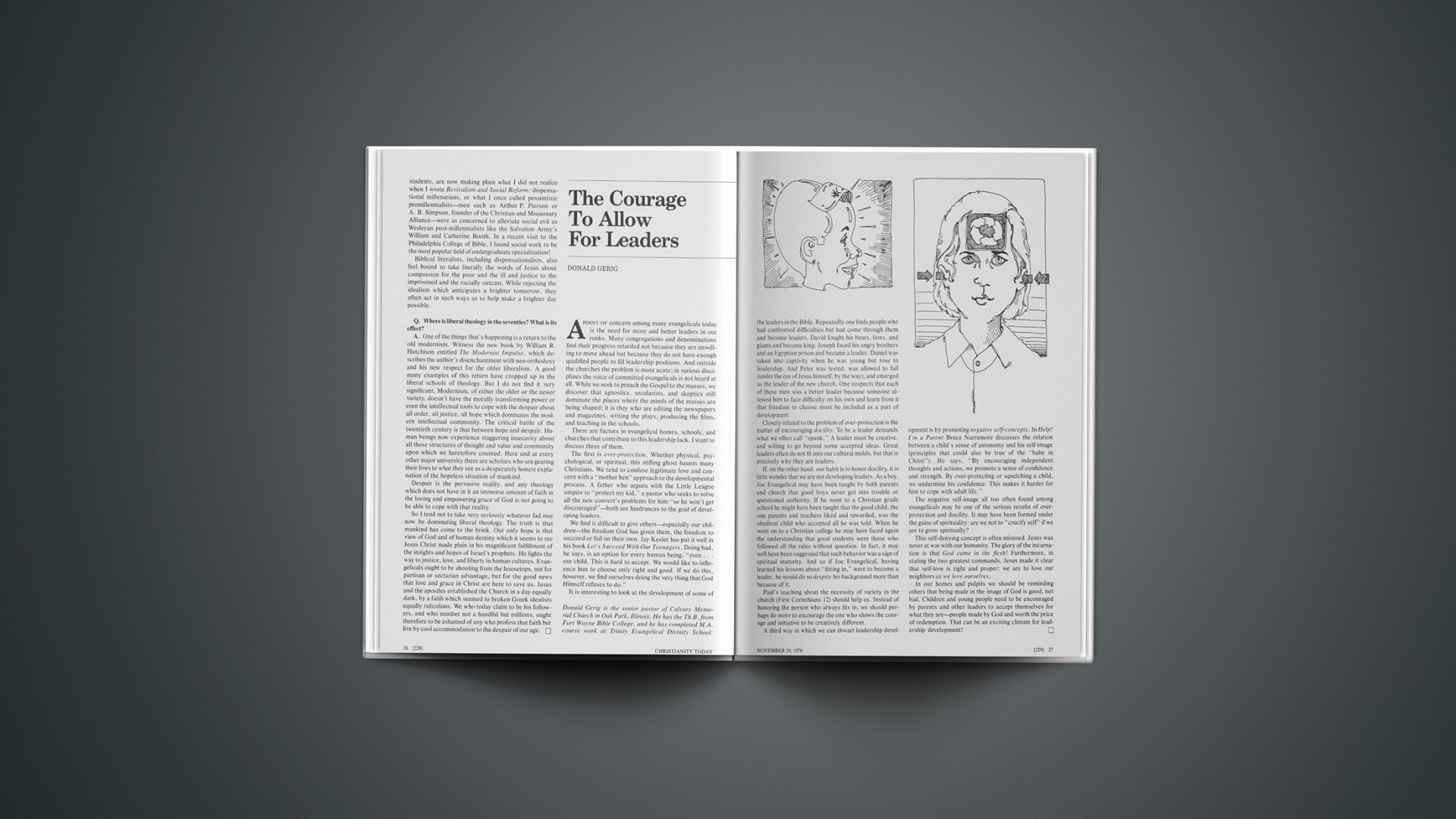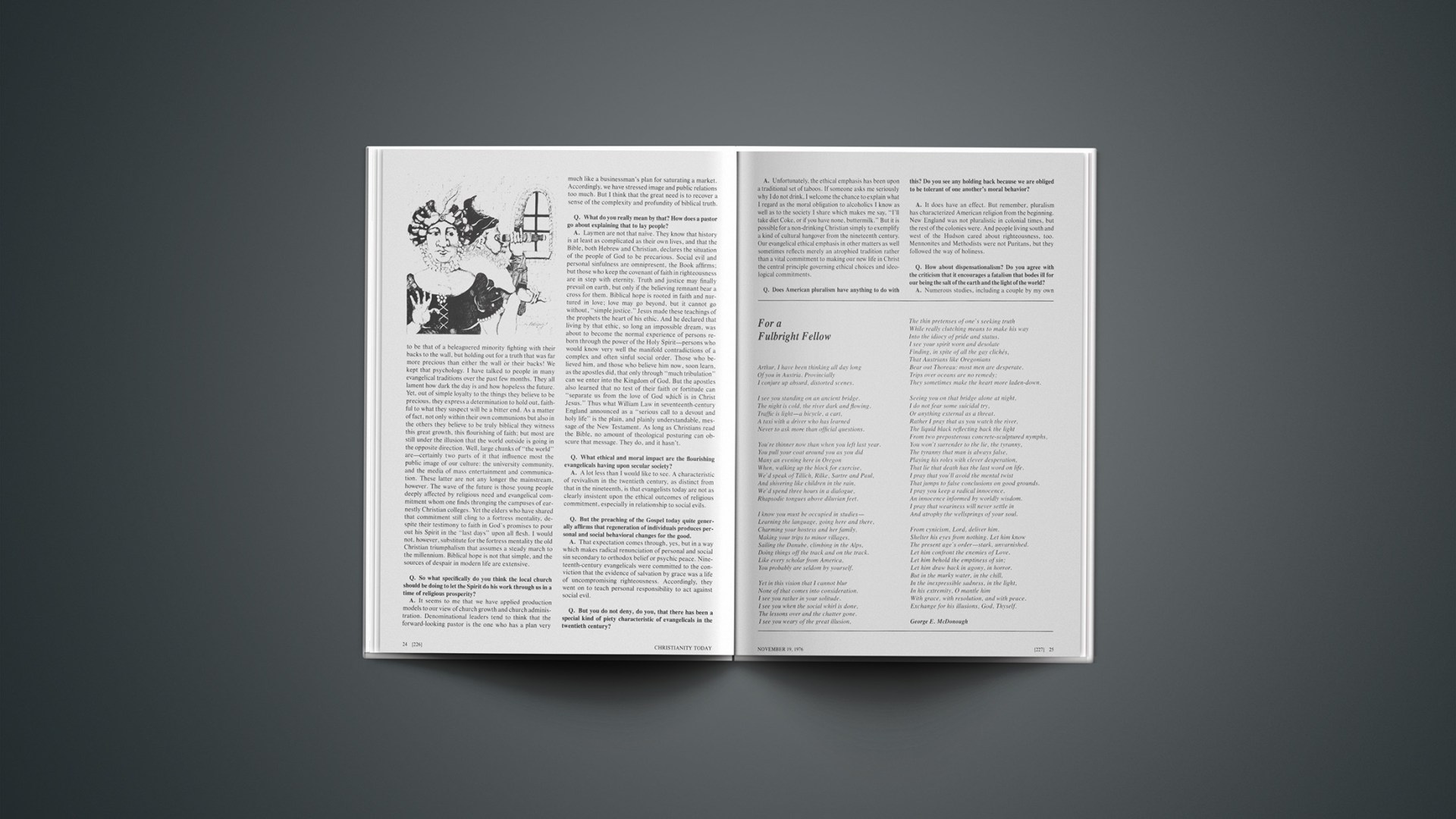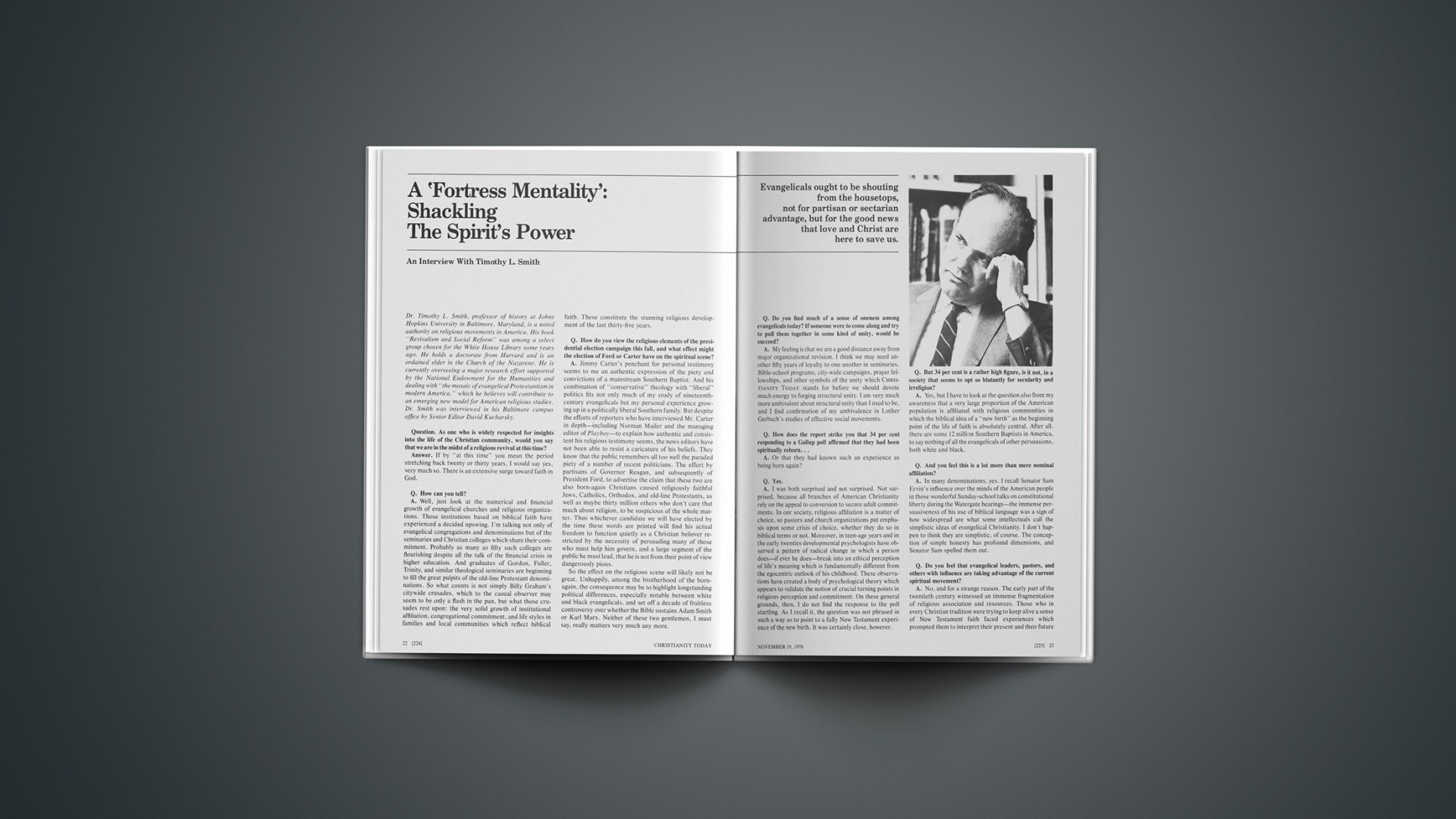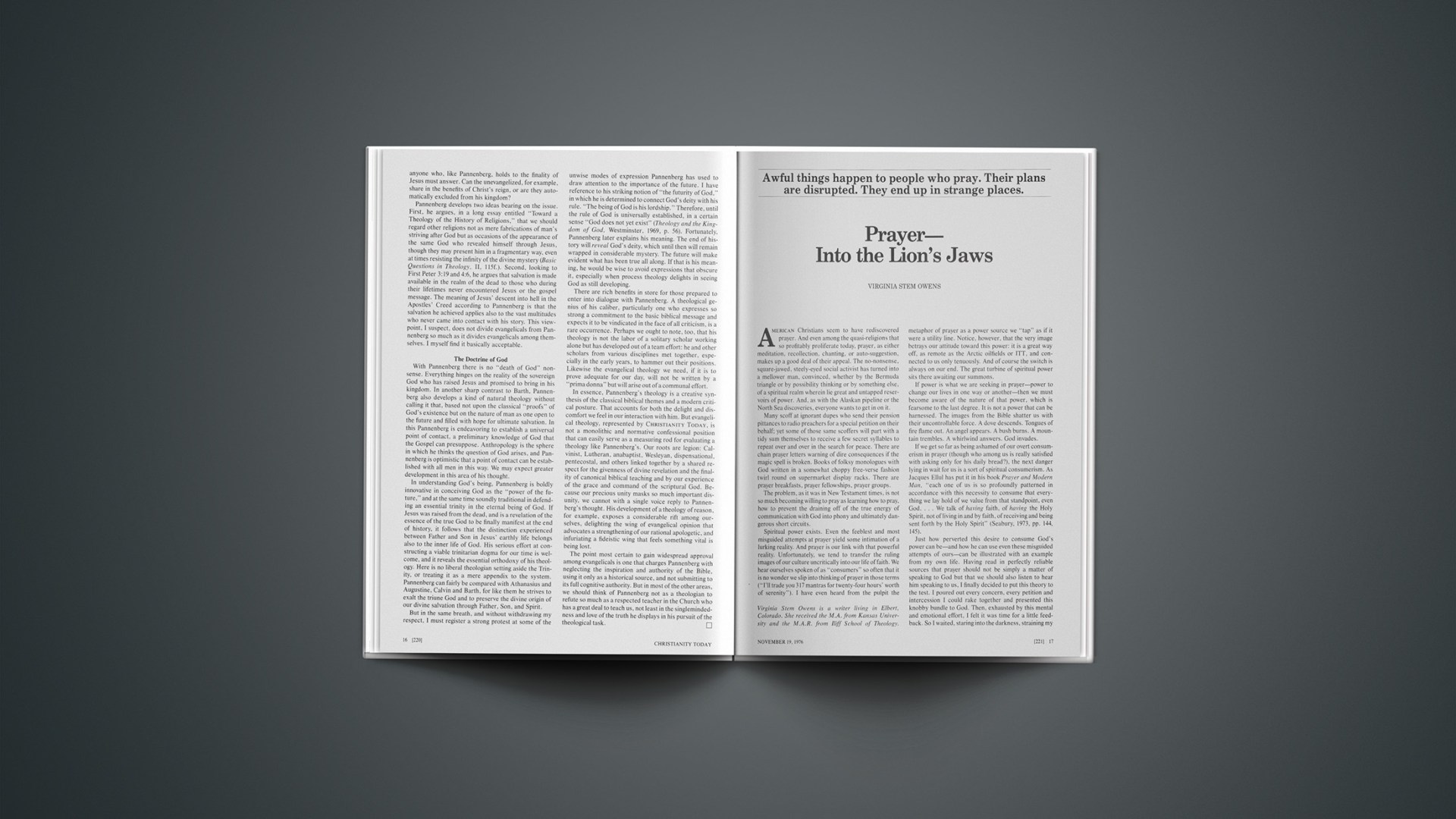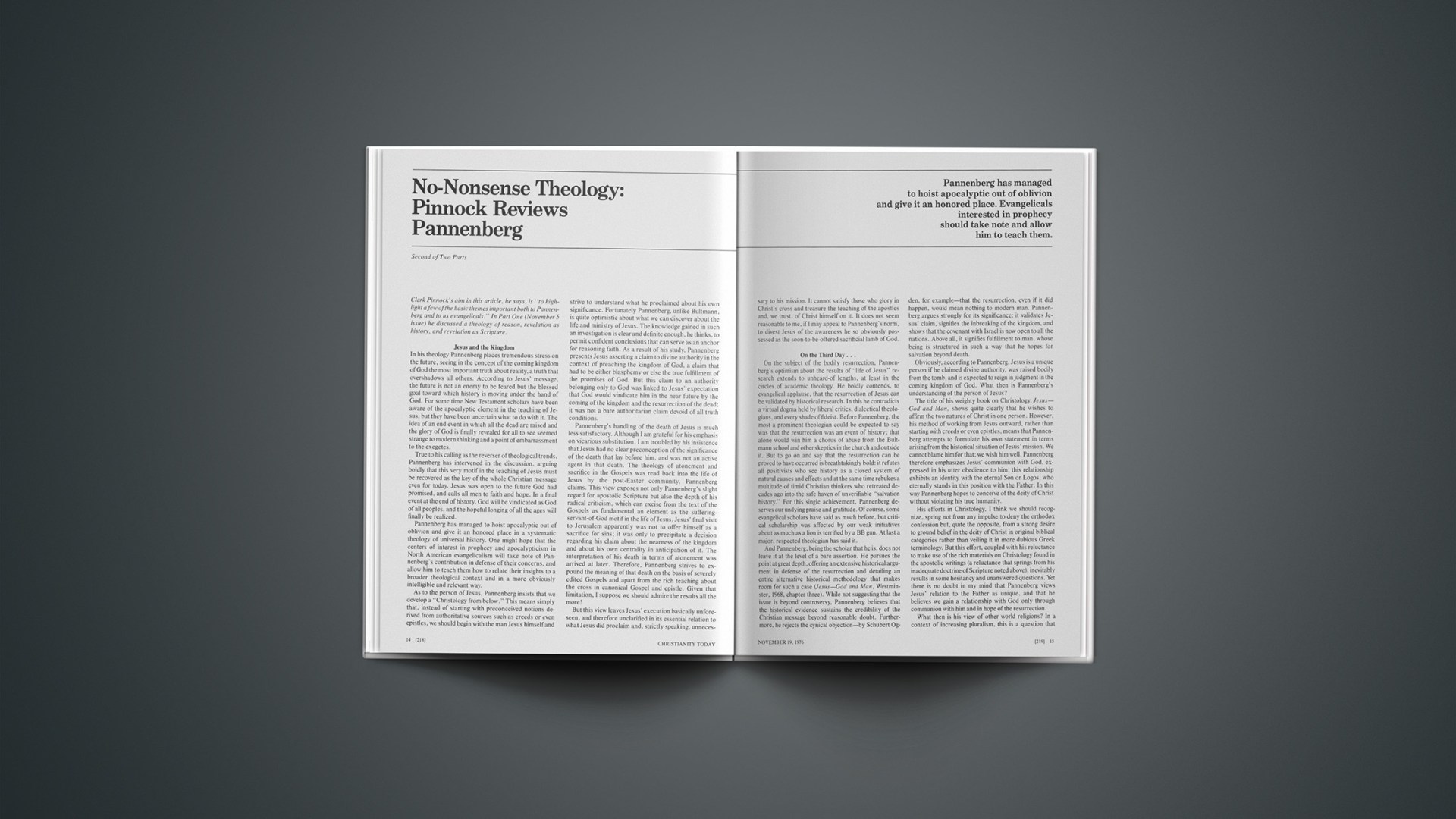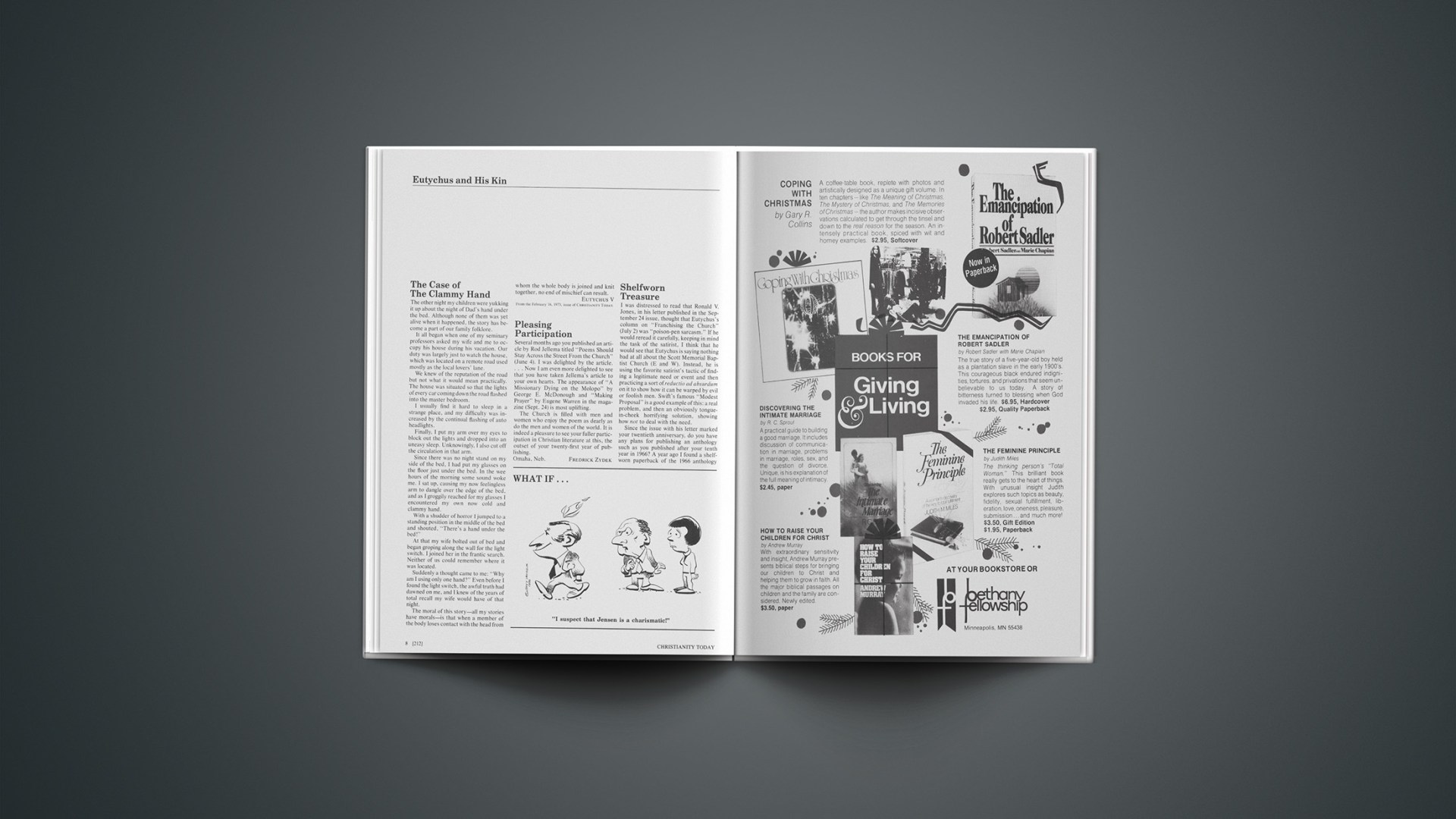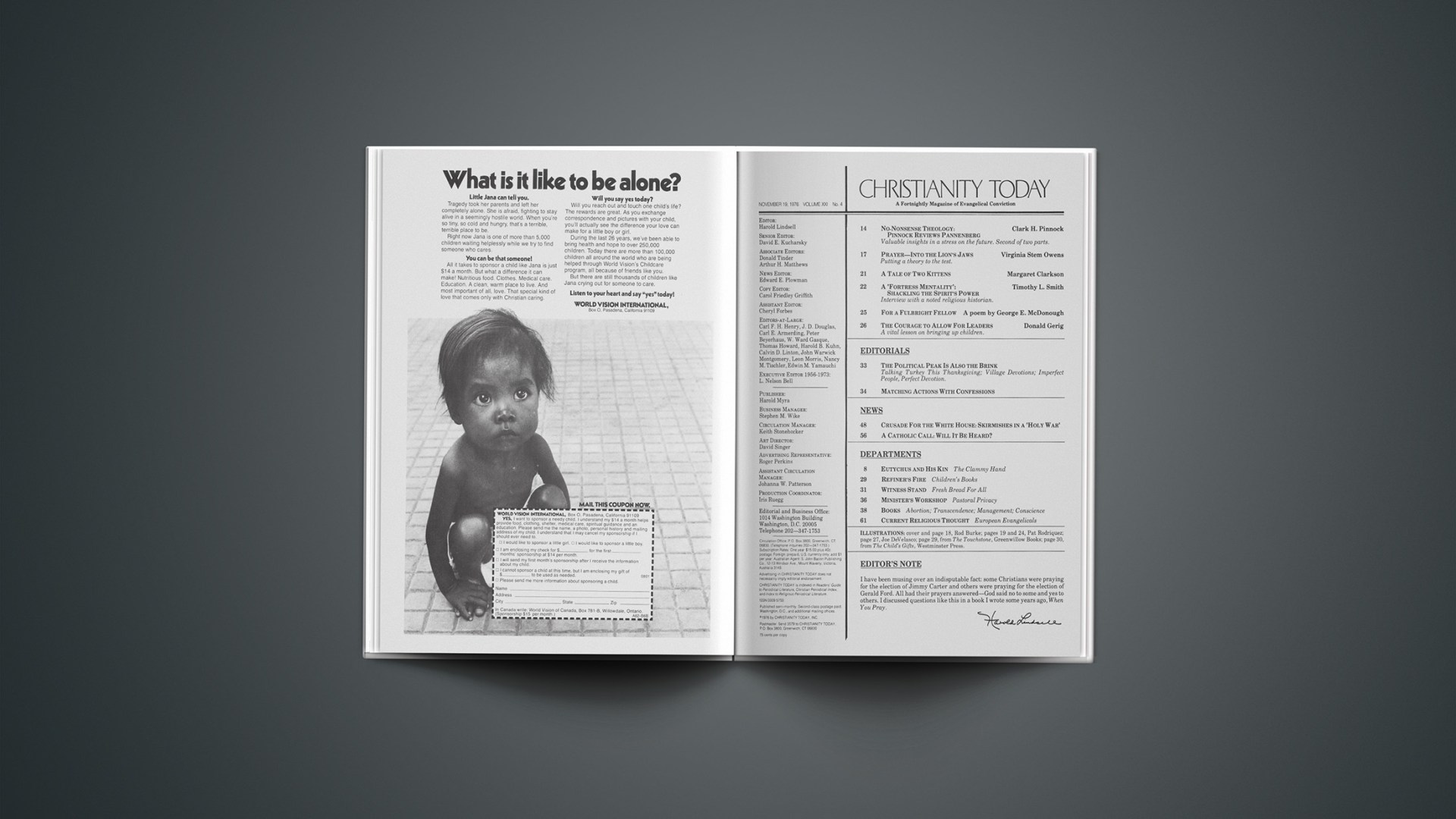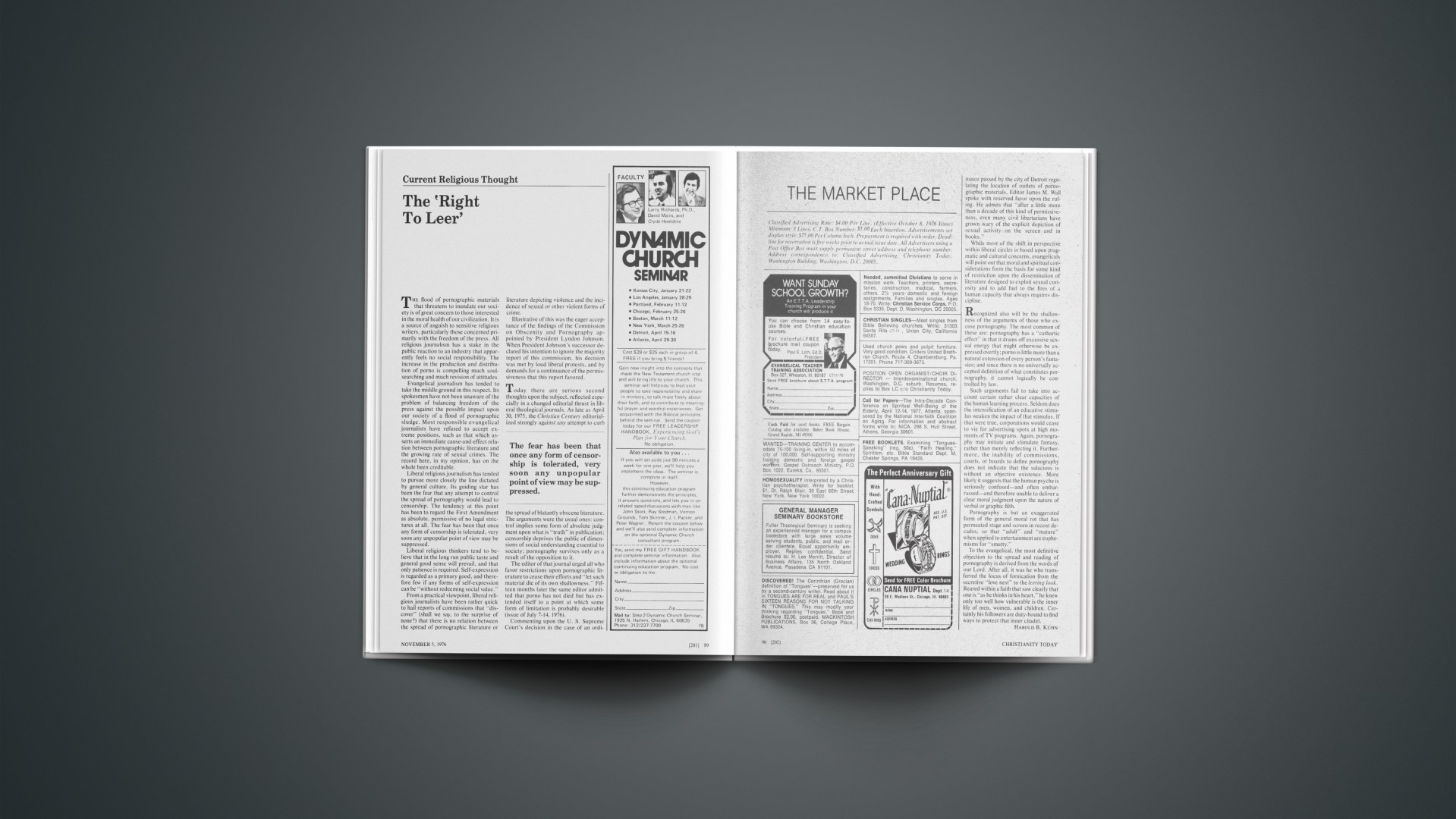A point of concern among many evangelicals today is the need for more and better leaders in our ranks. Many congregations and denominations find their progress retarded not because they are unwilling to move ahead but because they do not have enough qualified people to fill leadership positions. And outside the churches the problem is more acute; in various disciplines the voice of committed evangelicals is not heard at all. While we seek to preach the Gospel to the masses, we discover that agnostics, secularists, and skeptics still dominate the places where the minds of the masses are being shaped; it is they who are editing the newspapers and magazines, writing the plays, producing the films, and teaching in the schools.
There are factors in evangelical homes, schools, and churches that contribute to this leadership lack. I want to discuss three of them.
The first is over-protection. Whether physical, psychological, or spiritual, this stifling ghost haunts many Christians. We tend to confuse legitimate love and concern with a “mother hen” approach to the developmental process. A father who argues with the Little League umpire to “protect my kid,” a pastor who seeks to solve all the new convert’s problems for him “so he won’t get discouraged”—both are hindrances to the goal of developing leaders.
We find it difficult to give others—especially our children—the freedom God has given them, the freedom to succeed or fail on their own. Jay Kesler has put it well in his book Let’s Succeed With Our Teenagers. Doing bad, he says, is an option for every human being, “even … our child. This is hard to accept. We would like to influence him to choose only right and good. If we do this, however, we find ourselves doing the very thing that God Himself refuses to do.”
It is interesting to look at the development of some of the leaders in the Bible. Repeatedly one finds people who had confronted difficulties but had come through them and become leaders. David fought his bears, lions, and giants and became king. Joseph faced his angry brothers and an Egyptian prison and became a leader. Daniel was taken into captivity when he was young but rose to leadership. And Peter was tested, was allowed to fail (under the eye of Jesus himself, by the way), and emerged as the leader of the new church. One suspects that each of these men was a better leader because someone allowed him to face difficulty on his own and learn from it that freedom to choose must be included as a part of development.
Closely related to the problem of over-protection is the matter of encouraging docility. To be a leader demands what we often call “spunk.” A leader must be creative, and willing to go beyond some accepted ideas. Great leaders often do not fit into our cultural molds, but that is precisely why they are leaders.
If, on the other hand, our habit is to honor docility, it is little wonder that we are not developing leaders. As a boy, Joe Evangelical may have been taught by both parents and church that good boys never got into trouble or questioned authority. If he went to a Christian grade school he might have been taught that the good child, the one parents and teachers liked and rewarded, was the obedient child who accepted all he was told. When he went on to a Christian college he may have faced again the understanding that good students were those who followed all the rules without question. In fact, it may well have been suggested that such behavior was a sign of spiritual maturity. And so if Joe Evangelical, having learned his lessons about “fitting in,” were to become a leader, he would do so despite his background more than because of it.
Paul’s teaching about the necessity of variety in the church (First Corinthians 12) should help us. Instead of honoring the person who always fits in, we should perhaps do more to encourage the one who shows the courage and initiative to be creatively different.
A third way in which we can thwart leadership development is by promoting negative self-concepts. In Help! I’m a Parent Bruce Narramore discusses the relation between a child’s sense of autonomy and his self-image (principles that could also be true of the “babe in Christ”). He says, “By encouraging independent thoughts and actions, we promote a sense of confidence and strength. By over-protecting or squelching a child, we undermine his confidence. This makes it harder for him to cope with adult life.”
The negative self-image all too often found among evangelicals may be one of the serious results of over-protection and docility. It may have been formed under the guise of spirituality: are we not to “crucify self” if we are to grow spiritually?
This self-denying concept is often misused. Jesus was never at war with our humanity. The glory of the incarnation is that God came in the flesh! Furthermore, in stating the two greatest commands, Jesus made it clear that self-love is right and proper: we are to love our neighbors as we love ourselves.
In our homes and pulpits we should be reminding others that being made in the image of God is good, not bad. Children and young people need to be encouraged by parents and other leaders to accept themselves for what they are—people made by God and worth the price of redemption. That can be an exciting climate for leadership development!



